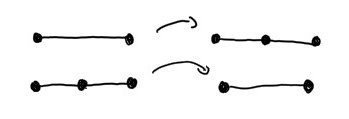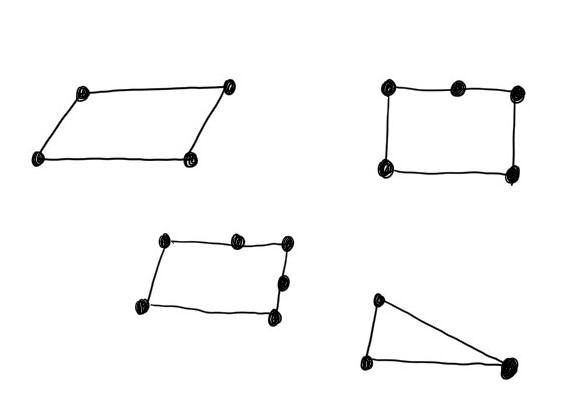Homeomorphism ???
1. Two terms
1.2. Homeomorphism
Once again we will restrict ourselves to the definition for graphs.
A subdivision of a graph G is a graph H which can be derived from G by applying the following operation any number of times: replace an edge e = ab by a path (a, x1, . . . , xk, b), where x1, . . . , xk are an arbitrary number of new vertices; that is, vertices which were not in a previous subdivision. For convenience, G is also considered to be a subdivision of itself. Two graphs H and H' are called homeomorphic if they are isomorphic to subdivisions of the same graph G. (Jungnickel, 2008, p. 23)
In other words, the graphs H' and H are homeomorphic if you can obtain the graph H' from H by either 1) subdividing an edge with one or more vertices, or 2) merging two edges which share a vertex of degree 2 by taking this vertex away (see Figure 1).

Figure 1. The two processes of subdividing and merging an edge.
For example, we see that all the graphs in Figure 2 are homeomorphic.

Figure 2. Homeomorphic graphs.